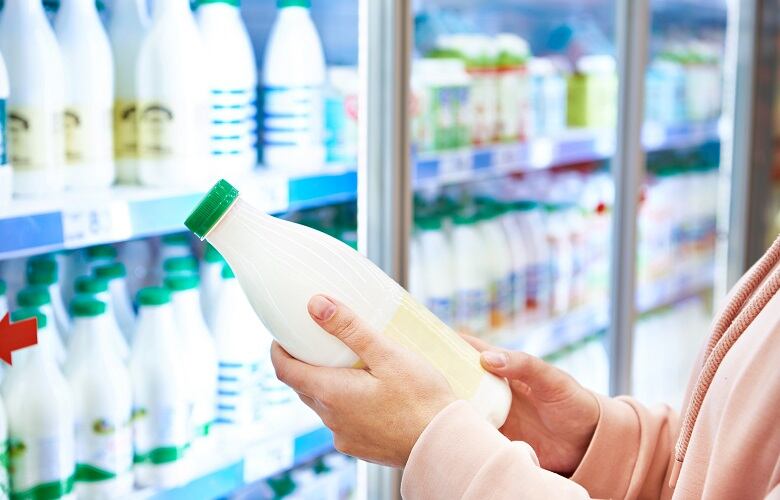"White milk is still by far the largest [dairy] subcategory in the store," but "it's been declining in terms of volume for quite some time," Crawford said. Still, he added, "We need to make sure we continue to give it the proper space that it needs on shelf and maybe that's not been the case in retail here for quite some time."
Private label rises, while most categories see volume declines
Overall, the 15 dairy categories, which include milk, natural cheese, yogurt, ice cream, creamers, and more, saw strong dollar growth, with all but cream/creamers, cream cheese, and whipped topping seeing volume decreases.
The total dairy market saw $8.85bn in sales growth year-over-year, led by total milk at $1.44bn, natural cheese at $1.31bn, and refrigerated yogurt at $1.03bn for the 52 weeks ending April 23, 2023. In terms of volume sales, total milk sales, processed cheeses, and margarine/spreads all saw a 3.3% year-over-year decline, with refrigerated deserts seeing a 4.8% dip in volumes, Circana found.
Though the dairy market already consists of many private-label offerings, they are leading the way in growth, Crawford noted. “Eight of the top 15 fastest growing brands [in dollars] are private label brands, and the top three are all private label brands,” he added. Additionally, private-label brands are seeing volume growth in several categories like natural shredded cheese (1.8%), natural cheese slices (3.4%), natural cheese chunks (1.7%), and ice cream (2%), while private-label milk saw a 1% decline in volume year-over-year.
"We know what [consumers] do when prices are up or when the economy takes a little bit of a dip. They shop at stores that offer lower prices like Aldi. They move from to store brand and private label food and beverage. They buy more essential items and don't buy as many impulse items."
Claims on the rise: Trans-fat-free is back
Consumers are also switching what type of claims they are looking for in their products with some claims that haven’t been prevalent in the category for years returning, Crawford said.
“Trans-fat-free [are] popping back,” Crawford said. “I hadn't seen that since the early 2000s when everybody reformulated everything to get rid of trans fats. But it's coming back into play, and ... products are starting to make those claims on their labels. It's not just in margarine and spreads; It's showing up in creams and creamers and some other categories.”
When it comes to the top five dairy claims, no/less oil saw $237m in sales and grew 40.2% year-over-year, no/low trans-fat came in at $1.43bn and grew 22.8%, no/low cholesterol at $999m and grew 22.8%, the grass-fed animal claim came in at $442m and saw 18.8% growth, and animal claims of humanely raised came in at $444m and grew 18.6%. In terms of claims that decreased, antioxidants declined by 1.6%, non-dairy by 4.9%, and fiber by 31.0%.
Though several dairy categories have seen declines in recent years, it’s important to look at the overall market and see how certain claims are leading to growth, Crawford noted.
“When we talk about milk declines, they're not done with dairy. You've got creams and creamers are up by 5%, cream cheese is up 4%, natural cheese is up 3% in that CAGR in terms of volume here. And so, consumers are still consuming dairy, it's just dairy milk that is seeing some softness.”
Even with volume declines, specific claims are driving growth in the milk category, Crawford noted. "Dairy milk products that have protein claims on it are up 10%, dairy milk products that have low or no sugars up 16%, [and] lactose-free up 9.5%," he said. However, these increases are not enough to offset the overall declines in milk, he added.
"When you think about those big growth, and why it's not able to kind of offset some of the overall declines, ... that's because the pockets are really really small. Protein that only makes up 2.5% of total milk, low and low sugar 1.5%, lactose-free is only 66% of total milk sales in milk volume, and so it's just not big enough to prop this up.”


